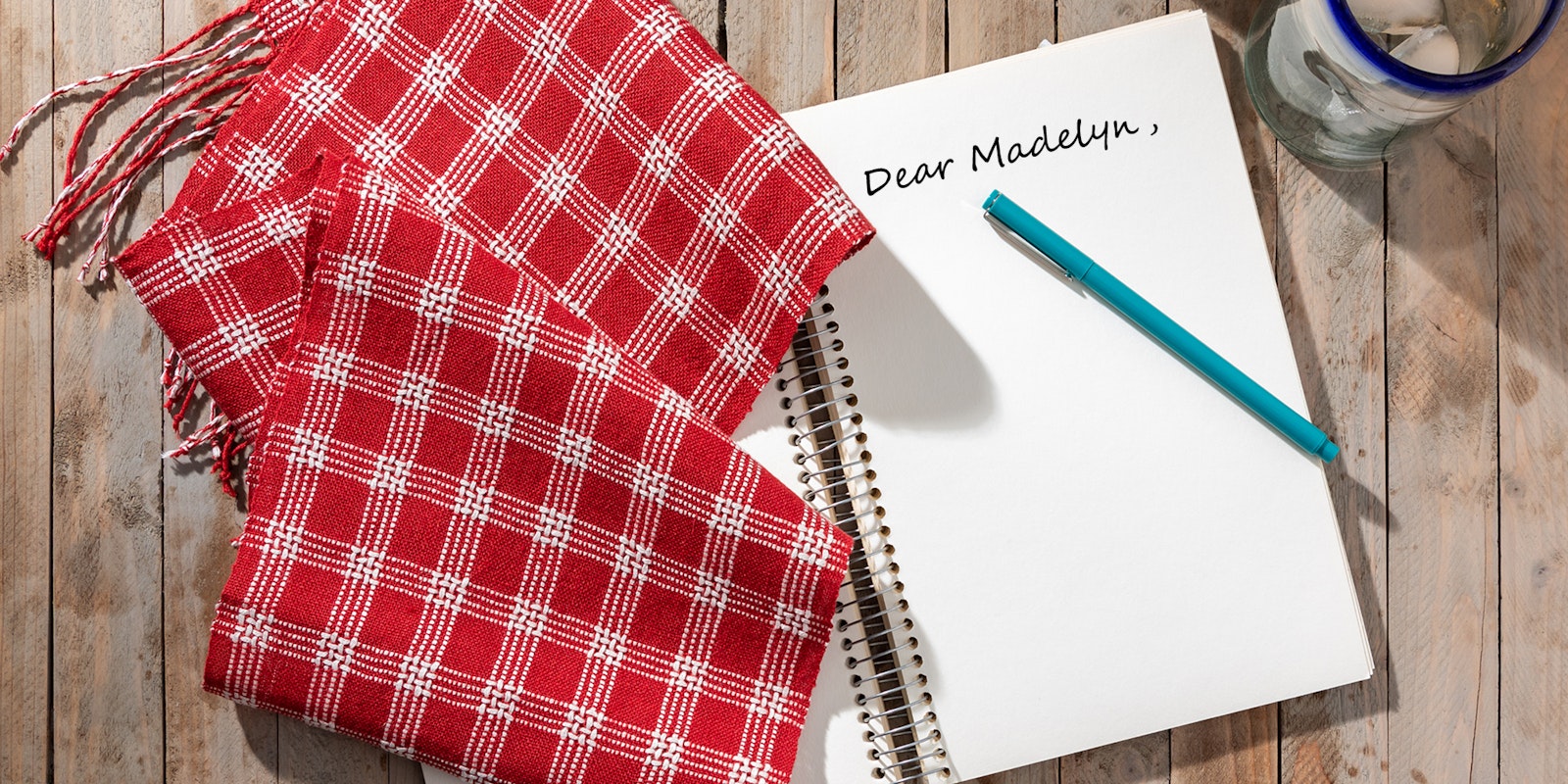I'm new to weaving; I just started a few weeks ago. I'm having a problem with warp tension. After I've been weaving for a while, the warp threads are very tight on the edges, but loose in the center, even though they all were under the same tension when I tied on at the beginning. I'm not sure why this is happening. – Ana
Hi Ana!
My guess is that the warp threads on the outer edges of the warp were wound on the beam differently from the warp threads in the center. This can happen for two reasons. One is that as you wound the warp on the back beam, the threads on the edges spread out from the width of the warp in the reed. That is likely to happen if you don't do anything to prevent it. As the warp goes from the reed or raddle, it tends to spread out on both sides since there isn't anything there to constrain the threads; the farther the reed or raddle is from the warp beam, the more they will spread. The warp is, therefore, less dense on the edges than in the center. As a result, it winds on at a smaller circumference on the edges since there are fewer threads in each layer there, which means less bulk between layers. Then, when you start weaving, eventually those threads get tighter because they are actually shorter. You might have expected this problem if, when you finished winding on the warp, the threads were longer on the edges than in the middle.
To prevent this, I tie a strong cord firmly on the back beam on each side of the warp to constrain it at even a slightly narrower width than the width in the reed so that as the threads reach the beam they wind on at exactly that width. It is important to have heavy paper or sticks between the layers of the warp, too, to keep the edge threads from falling off the edges in subsequent layers, which would also affect their tension.
There is another possible cause for a difference in warp tension on the edge threads such as you describe. If you held the warp under tension as you wound on or had someone else hold it under tension, you can't help but apply more tension to the threads on the edges because of the angle they have to go through to get to your hands from the reed or raddle. For that reason, I don't apply tension when I wind the warp on, but instead, wind a turn and then pull on groups of warp threads very firmly so that each group gets a lot of tension and the same tension (the crank and yank method). There are other ways to achieve even warp tension, but this one has always worked best for me. (I show all these steps in my video, Warping Your Loom) After you wind the warp on the warp beam, it should make a perfect cylinder with the same circumference from one side of the warp to the other.
It does sound like you have learned a lot in a few weeks! Welcome to weaving!
– Madelyn
If you have a weaving question please email Madelyn! View related & recent "Ask Madelyn" posts!

